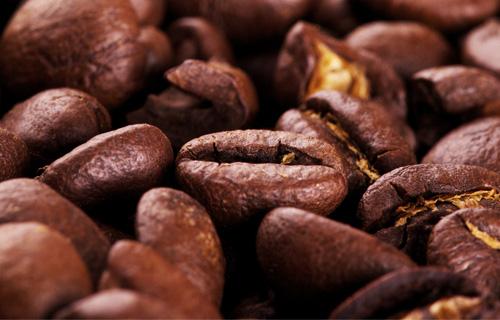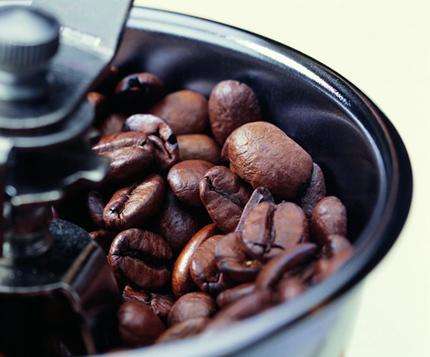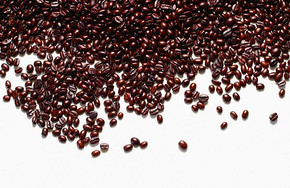What kind of coffee beans are male and female?
Follow the caf é (Wechat official account vdailycom) and found that Beautiful Cafe opened a small shop of its own.
The so-called male beans are coffee beans that are round. A single fruit will contain a coffee bean.
And the mother beans are coffee beans that are semicircular. A single fruit will contain two coffee beans.
Coffee beans are the fruits of coffee trees. Generally speaking, a single fruit contains two coffee beans, which is called Type I (type 1). However, affected by the above factors, some of the fruit will become a single bean at maturity, and this round single coffee bean is called peaberry, or Type II (type 2). Compared with the No. 2 type, some people commonly call the No. 1 type as "mother bean". In fact, the two are only the differences in the growth patterns of coffee beans, not gender differences.
Of course, the names of male beans and mother beans will mislead the public. Is not the real mother-in-law of the coffee tree.

So what's the difference between these two kinds of coffee beans?
Public beans are called Peaberry in English and round beans in Chinese. In a coffee tree, only 5% are male beans, and the rest are female beans. In fact, male beans are deformities that occur during the growth of coffee beans. In general, coffee beans have two pieces of beans, but there is only one piece of beans, which is also known as a single bean. A piece of beans absorbs more nutrients, and the color, shape and particles of coffee beans are relatively large. The fragrance of boiled coffee is constantly sweet, and the quantity is relatively small, so it is also known as Dream Coffee. However, because the number is too small, only a few coffee beans are male beans in an average of 100 coffee beans. Generally speaking, coffee growers are not particularly singled out to sell, and this difference is really difficult to find if you do not directly hit or contact the scene of the place of origin. Of course, there are individual merchants who will sell public beans. But as the saying goes, things are rare and expensive, and of course coffee is more expensive than beans.
How to choose coffee beans?
Freshness is king.
For a cup of coffee, fragrance is the first sensory sensation. At the same time, aroma is also an important indicator to determine the quality of this cup of coffee, and freshness is an important guarantee of aroma.
Through the label, we first have to look at the date of the coffee beans. Among them, the production date within half a year are of relatively high quality. Next, check the integrity of the package and see if it is still in a vacuum. If it is a jar with inert gas, whether the can body is sealed.
Tips: choose fresh coffee beans whenever possible. Of course, the coffee beans that have just been roasted contain too much carbon dioxide and are not suitable for brewing immediately. It should be kept for at least two days to more than a week.
Whether coffee beans or coffee powder, once they are unpacked, they begin to have a relationship with the air, and their aroma will dissipate with the passage of time. In order to maintain the aroma of coffee, a sealed can with good sealing performance can help you. After opening, put the coffee beans or coffee powder in a sealed can.
Remember: after opening, the coffee beans will be finished within 1 month, and the coffee powder will be finished in about 2 weeks.
The origin is very important.
Coffee beans are a kind of agricultural products, and a good producing area is very important for coffee. The flavor of coffee beans varies slightly from different places of origin, and the origin on the label can help us to select the best coffee beans.
Coffee producing areas in the world are mainly in Africa, Central and South America and Indonesia; in addition, North America, China's Yunnan and Vietnam also produce coffee. Here's a list of the top five coffee producers in the world to see if it's helpful to your choice:
Fifth place
Costa Rica: good mountains, good water, good coffee
Costa Rican coffee beans
Mainly Arabica coffee beans
Treated by washing with bright style
Mild acidity and excellent sweetness.
Fourth place
Guatemala: an amazing upstart
Guatemalan coffee with its unique style
It has become one of the most famous coffee producing areas in the world in recent years.
In the shady volcanic zone
Coffee beans develop a complex aroma
Layers and full taste
People can't help thinking of the ancient Mayan culture here.
Profound and mysterious.
Third place
Colombia: the fun of exploring diversity
The most important feature of Colombian coffee
It's the diversity of its styles.
Generally speaking, Colombian coffee has a fresh style.
It is fruity and rich. Coffee producers in Colombia
Have very professional baking technology
To maximize the quality of coffee beans.
Number two
Kenya: an unforgettable coffee experience in this lifetime
Temperatures are lower in the mountains of Kenya at high elevations.
Prolong the ripening period of coffee beans
Then it can fully accumulate the complex aroma of the fruit.
Unrestrained acidity, heavy aroma of fruit
Such as blackcurrant, grapefruit, etc.
Constitute the rough mature characteristics of Kenyan coffee.
Kenya pays attention to the cultivation of coffee varieties
The SL28 discovered by the professional team is
The direct branch of bourbon coffee bean
It is the best representative of the quality and flavor of Kenyan coffee.
First place Ethiopia: the original taste of coffee
Ethiopia is the famous Arabica.
The birthplace of coffee beans
So far, people have maintained the tradition of harvesting wild coffee beans.
A coffee garden more than 1500 meters above sea level
After more than a thousand years of evolution and adaptation
Formed a unique coffee style.
Growing in the wild.
Ethiopian coffee is called "coffee in the wilderness".
Retain the most primitive and natural taste of coffee beans
It has the most direct and full expression of the local soil.
Among the nine major coffee producing areas in Ethiopia
Hidamo and Yega Xuefei are the most outstanding.
Yega Xuefei originally belongs to the sub-producing area of Hidamo.
It is independent because of its special flavor.
The rich and complex fruit aroma makes it almost
Become an international sensation overnight
It is expensive to be sought after by experts.
Important Notice :
前街咖啡 FrontStreet Coffee has moved to new addredd:
FrontStreet Coffee Address: 315,Donghua East Road,GuangZhou
Tel:020 38364473
- Prev

Hand-flushing method of Colombian Huilan coffee beans
Follow the caf é (Wechat official account vdailycom) found that the fine cafe opened its own shop Colombia's boutique bean producing areas are mainly in the south, more than 1500 meters above sea level, including St. Augustine (San Augustin, Huila) in Huilan Province, Popayan, Cauca in Cauca Province, Nari ñ o Province, and Tolima Province, where products are exquisite.
- Next

Flavor description of Brazilian boutique coffee beans
Following Cafe Review (official Wechat account vdailycom) found that Beautiful Cafe opened its own shop in Seltang Yellow Bourbon, Brazil: Brazilian processing method: honey treatment (Pulped Nature) mellow: medium acidity: low variety: yellow bourbon flavor: floral aroma with plum and dark chocolate flavors and honey sweet food: orange and lemon
Related
- Detailed explanation of Jadeite planting Land in Panamanian Jadeite Manor introduction to the grading system of Jadeite competitive bidding, Red bid, Green bid and Rose Summer
- Story of Coffee planting in Brenka region of Costa Rica Stonehenge Manor anaerobic heavy honey treatment of flavor mouth
- What's on the barrel of Blue Mountain Coffee beans?
- Can American coffee also pull flowers? How to use hot American style to pull out a good-looking pattern?
- Can you make a cold extract with coffee beans? What is the right proportion for cold-extracted coffee formula?
- Indonesian PWN Gold Mandrine Coffee Origin Features Flavor How to Chong? Mandolin coffee is American.
- A brief introduction to the flavor characteristics of Brazilian yellow bourbon coffee beans
- What is the effect of different water quality on the flavor of cold-extracted coffee? What kind of water is best for brewing coffee?
- Why do you think of Rose Summer whenever you mention Panamanian coffee?
- Introduction to the characteristics of authentic blue mountain coffee bean producing areas? What is the CIB Coffee Authority in Jamaica?

